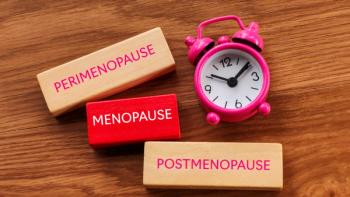
As Fewer Hospitals Report Cases of COVID-19, Wastewater Surveillance Could Be a Better Means of Estimating Countywide Infection Rates
Wastewater surveillance could be the most consistent way to measure COVID-19 across US counties, a recent study indicates.
Wastewater surveillance could be an effective way to track COVID-19 prevalence across US counties, according to a study published in JAMA Network Open. Reporting wastewater surveillance to the Centers for Disease Control and Prevention (CDC) National Wastewater Surveillance System (NWSS) creates an opportunity to measure viral wastewater concentration relative to peak SARS-CoV-2 concentration (wastewater percentile), which can ultimately be used to evaluate changes in COVID-19 in the community.
“Wastewater metrics likely provide the better estimate of infection prevalence as formal case testing declines,” the study authors wrote in the article.
The CDC and other public health agencies take reports of COVID-19 cases and/or hospitalizations to evaluate county levels of COVID-19. However, home testing, vaccines, and medications may reduce severity and hospitalizations from COVID-19, rendering hospitals less effective for assessing county-wide cases, according to the investigators.
Wastewater can be an effective way to survey the dynamics of SARS-CoV-2 in communities, and it can be used to help identify future COVID-19 variants of concern and transmission patterns; however, public policy is not often influenced by findings from wastewater in public health–monitored sewersheds. Further, there are limited data that show whether wastewater metrics align with numbers from reported cases and hospitalizations.
In this observational cohort study, investigators collected national wastewater SARS-CoV-2 metrics from 268 counties in 22 states that participated in the NWSS. Investigators aimed to determine whether wastewater data aligned with reported COVID-19 cases and hospitalizations, using a time series analysis to compare the efficacy of wastewater metrics between January and September 2022.
During the first quarter of 2022, SARS-CoV-2 wastewater concentration and COVID-19 cases and hospitalizations were found to be closely linked. The wastewater percentile of SARS-CoV-2 was associated with high reported case and hospitalization rates at greater than 200 cases and 10 cases per 100,000 people, respectively.
Investigators hypothesized that SARS-Cov-2 wastewater metrics would not align with case and hospitalization metrics in the second and third quarters. They hypothesized that the adoption of at-home COVID-19 testing would not be reported to health authorities as often as hospital and case rates are reported, which was confirmed by the analysis.
Wastewater surveillance was not as closely associated with hospitalization metrics. The rise in at-home testing likely caused this disassociation because less people were going to health care providers and hospitals for testing, where reporting is more common. In addition, there was more availability of vaccines and medications that prevent serious illness requiring hospitalization, and the variants become less severe over time. Overall, wastewater surveillance could be the most consistent way to measure COVID-19 across US counties.
The study contains limitations. First, investigators used wastewater facilities with ample data. In addition, the study uses NWSS data, forgoing use of de novo data. Finally, counties with wastewater data are larger than the average US county.
“This study offers a strategy to operationalize county wastewater percentile to improve the accurate assessment of community SARS-CoV-2 infection prevalence when reliability of conventional surveillance data is declining,” the study authors wrote in the press release.
Reference
Varkila M, Montez-Rath M, Salomon J, et al. Use of Wastewater Metrics to Track COVID-19 in the US. JAMA Netw Open. 2023;6(7):e2325591. doi:10.1001/jamanetworkopen.2023.25591
Newsletter
Stay informed on drug updates, treatment guidelines, and pharmacy practice trends—subscribe to Pharmacy Times for weekly clinical insights.















































































































































































































